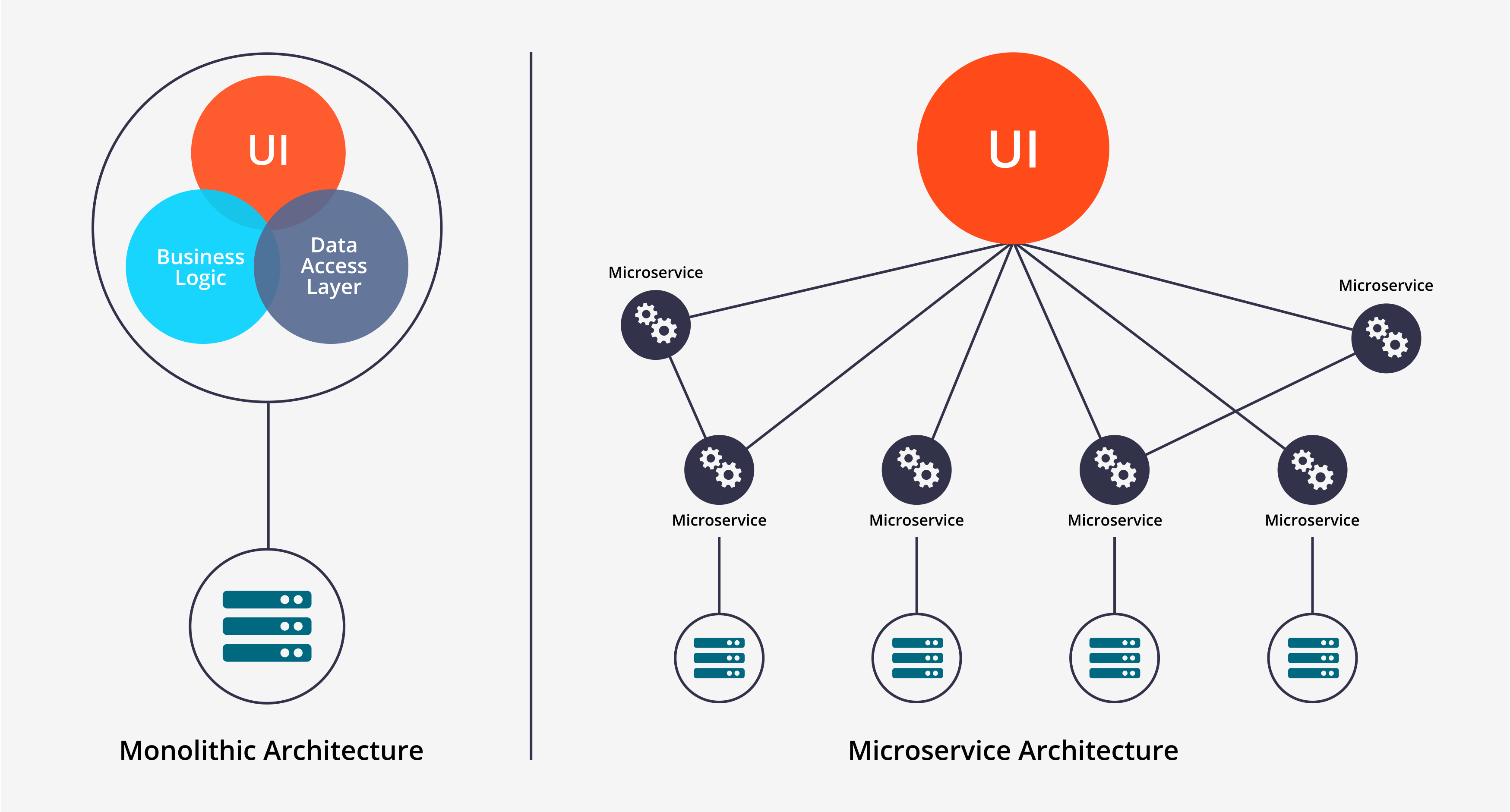In this article, we will be comparing Monolithic vs Microservices architecture. And we will be discussing the pros and cons of both monolithic and microservice architecture.
What is monolithic?
Monolithic architecture is the one with which most people are familiar. Monolithic is basically the traditional way of building web applications. In monolithic everything is tightly coupled; meaning all the web application core and general logic are within the same application space. By application space here, we mean literally it is one application or software that serves a single purpose. And is designed specifically to serve that particular purpose along with all the needy greedy details attached to it as well. There can be the isolation of concern but that is only limited to component or module level only.
What is microservices architecture?
Microservices architecture takes a different approach in terms of application space. The application could potentially be divided into hundreds of smaller chunks of logic. These chunks are individually designed to serve a singular purpose. And every single chunk has its own responsibility and the logic that it performs is not dependent or related to any other chunk. This chunk is called a ‘service’ and a couple of these services when are combined they form a microservices architecture. Each microservice is responsible for one area of logic. Meaning one microservice has no power or control over the other microservice. This creates an open environment that is highly customizable. And at any time you can turn off one or more services. And the whole application will still be functioning based on other turned-on microservices.
Difference Monolithic vs Microservices
Here are some of the major differences in Monolithic vs microservices.

Which one to choose?
This is something that totally depends upon the needs of the system that you are creating. If the logic can be separated and is needed to be independent chunks of information that work seamlessly together, but can also work as individual independent components. Then micro services is the way to go. This means that your configuration will work even if one service is operational and all other service are down or turned off for some reason. This is a huge advantage of microservices as compared to monolithic. As this helps in isolating a problematic issue to only that service and no other component/service is stopped or slowed down due to one service misbehaving.
So, if you are in fact designing a system that could be split into different smaller services any no service logic is dependent on the other, then microservice is a safe choice and in most cases can be the only choice.
Why follow monolithic when you can do microservices
having micro services at our disposal doesn’t mean that we can rule out monolithic altogether. In today’s world monolithic is till the king. and majority of applications are made on monolithic. In fact 80% of the web is based on monolithic. the only reason for this iws due to the nature of legacy and modern web applications. as m0ost of the user friendly applications focus on providing users with better experience rather than independent instances of better experiences, hence taking the whole application structure as one.
Microservice undoubeptly have their pros but in most scenarios it simply makes no sense to go for microservice when same can be achieved through monolithic. Infact having microservice in this case actually adds more to the cost rather than adding more to productivity. In microservcices development is slow, and specific to the service on hand.
Conclusion
Both monolithic and micrioservices are good options. More modern applications are now shifting to microservices, but these are general users applications such as social networks and video sharing platforms. In these applications the goal is to keep the load divided on each single module / service. Hence one service could be very heavily used in an application and the other could not have been used in a while. Keeping this in mind, optimization will be tailored according to the higher usage of the service.

